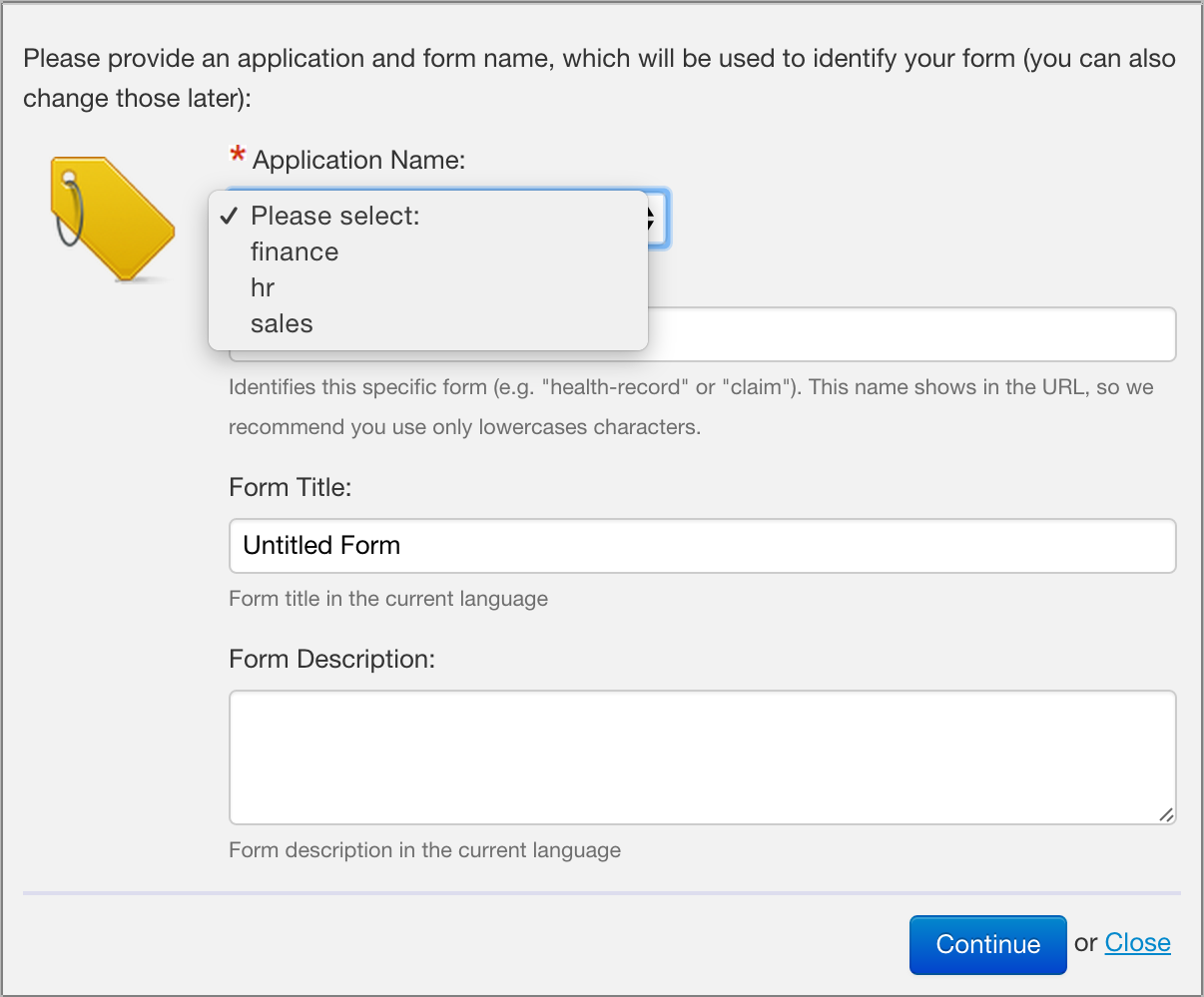Access Control in Form Builder
Form Builder permissions
Specific Form Builder permissions are configured with WEB-INF/resources/config/form-builder-permissions.xml.
If you'd like to have multiple classes of Form Builder users where some case edit, say, form in the hr app, while other can edit forms in the sales app, then you'll want to setup the form-builder-permissions.xml.
NOTE: The file used to be called form-runner-roles.xml.
In this file you map role names to applications and forms. For instance, the following tells Orbeon Forms that only users with the role hr-form-editor can edit or create forms in the hr app, and only users with the role sales-form-editor can edit or create forms in the sales app. As you can infer from the syntax, you could be even more specific and only give access to users with a given role to a specific form in a specific app.
<roles>
<role name="hr-form-editor" app="hr" form="*"/>
<role name="sales-form-editor" app="sales" form="*"/>
</roles>
NOTE: Each <role> element refers to as single role name. It is not possible to place multiple space-separated roles in the name attribute.
Orbeon Forms can infer the roles for the current user either based on information it gets from the container or from an HTTP header. Those two cases are detailed in the following two sections. Once you've defined your form-builder-permissions.xml and done the appropriate setup for container-driven or header-driven roles, as described below:
- The Form Builder summary page will only show the forms users have access to.
- When they create a new form, if users don't have the right to create a form in any app, instead of seeing a text field where they can enter the application name, they will see a drop-down listing the possible application, as shown in the following screenshot:

LIMITATION: Restrictions on the form name in form-builder-permissions.xml are at this point not supported; only restrictions on the app name are supported. This means that you should always use `form=""`. If you define a restriction on the form name, it won't be enforced at the time the form is created, allowing users to create, save, and publish a form with an undesirable name. However they then won't be able to see the form they created when going back to the summary page.*
Form Runner Home page
[SINCE Orbeon Forms 4.3]
form-builder-permissions.xml also impacts the Form Runner Home page, which supports unpublishing and publishing forms.
If the configuration is unchanged, by default users cannot unpublish/publish from the Home page. In order to allow this feature, you must configure at least one <role>.
In general, the behavior is as follows:
by default no
<role>elements are presentfor the Form Builder Summary and New pages, this is equivalent to:
<role name="*" app="*" form="*">
- for the Form Runner Home page
- no
<role>elements- user cannot unpublish/publish any forms
- user cannot see unavailable forms
- with
<role name="*" app="*" form="*">:- user can unpublish/publish any forms
- user sees unavailable forms
- no
This logic ensures:
- that Form Builder is usable out of the box even without setting Form Builder permissions
- that the Form Runner Home page, which can by default be accessed by any user unless it is explicitly protected, does not inadvertently provide access to administrative functions
Path-based permissions
The paths used by Form Builder look as follows:
| Path | Description |
|---|---|
/orbeon/fr/orbeon/builder/new |
Create a new form |
/orbeon/fr/orbeon/builder/edit/{id} |
Edit a form with the given id |
/orbeon/fr/orbeon/builder/summary |
View all the editable forms |
Path-based access restrictions can also be implemented to fully or partially protect Form Builder access.
Orbeon Forms does not specifically provide a mechanism to protect access based on paths, but your container or web server might.